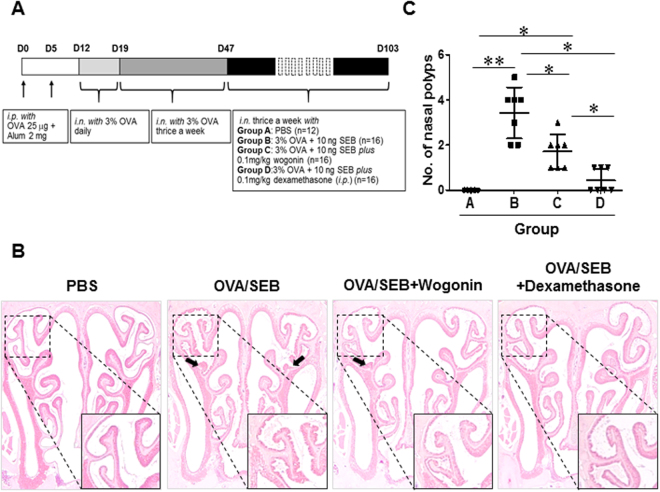Figure 5.
Nasal polyp burden is reduced in the wogonin-treated group. (A) Protocol for the development of chronic eosinophilic rhinosinusitis with nasal polyps in mice. Alum, Aluminum hydroxide; i.p., intraperitoneal injection; i.n., intranasal instillation. (B) and (C) Photographs of representative nasal polypoid lesions (arrows) stained with hematoxylin and eosin (original magnification ×1.25). Nasal polypoid lesions were detected in Groups B, C, and D. Numbers of nasal polyp-like lesions were expressed as the total number per coronal section. The numbers of polyp-like lesions were reduced in Groups C and D compared with that in Group B. The black box indicates the magnified area. Data are expressed as the means ± SD. *P < 0.05, **P < 0.01. Mann-Whitney U test. Scale bar = 20 μm.

